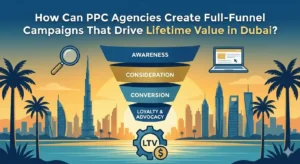In the digital age, a compelling web presence is essential for businesses to thrive. Central to this is the process of web design, wherein the visual aesthetics play a crucial role. Crafting an engaging visual design is not merely about aesthetics; it’s about enhancing user experience, conveying brand identity, and achieving business objectives. This article delves into the intricate process of creating the visual design in web development, outlining key steps and considerations.
Understanding User Needs and Business GoalsBefore embarking on the visual design journey, it’s imperative to comprehend the target audience and business objectives. Conducting user research, analyzing demographics, and understanding user behaviors provide invaluable insights.
Simultaneously, aligning design decisions with the overarching business goals ensures that the visual elements resonate with the intended audience while driving desired outcomes.
Wireframing and Prototyping
Wireframing serves as the blueprint for the website’s layout and functionality, focusing on structure rather than aesthetics. It involves creating skeletal frameworks that outline the placement of elements, navigation flow, and overall user interface.
Prototyping takes this a step further by adding interactivity, allowing stakeholders to visualize the user experience. These preliminary stages provide a solid foundation for the subsequent visual design process.
Visual Branding and Style Guide Development
Visual branding encapsulates the essence of a brand through imagery, color palette, typography, and other visual elements. Developing a comprehensive style guide ensures consistency across all touchpoints, reinforcing brand identity and fostering recognition.
It delineates rules regarding logo usage, color schemes, typography hierarchy, and imagery guidelines, empowering designers to maintain coherence throughout the design process.

Mood Boards and Conceptualization
Mood boards serve as visual collages that evoke the desired aesthetic direction, drawing inspiration from various sources such as art, photography, and design trends.
These curated collections facilitate communication between designers and stakeholders, aligning expectations and refining the visual narrative. Conceptualization involves translating ideas from the mood boards into tangible design concepts, exploring different visual treatments and iterating based on feedback.
Iterative Design Process
The design process is inherently iterative, involving multiple rounds of refinement based on feedback and testing. Designers collaborate closely with stakeholders to fine-tune the visual elements, ensuring alignment with the brand vision and user preferences.
User testing and feedback mechanisms provide invaluable insights into usability and effectiveness, driving continuous improvement throughout the design lifecycle.
Responsive Design and Accessibility
In today’s multi-device landscape, responsive design is imperative to ensure optimal viewing experiences across various screen sizes and devices.
Designing with accessibility in mind ensures that the website is usable by individuals with diverse abilities, adhering to accessibility standards such as WCAG (Web Content Accessibility Guidelines). Incorporating responsive design principles and accessibility considerations from the outset enhances inclusivity and usability.
Visual Optimization and Performanc
Optimizing visual assets for web delivery is crucial for enhancing performance and user experience. Techniques such as image compression, lazy loading, and asset minification minimize load times and improve page responsiveness.
Prioritizing visual elements based on their impact on user engagement and conversion rates ensures that essential content remains accessible without sacrificing performance.
The web design process is a multifaceted journey that culminates in the creation of compelling visual experiences. By understanding user needs, aligning with business goals, and following a systematic approach, designers can craft visually engaging websites that resonate with audiences and drive results. Through collaboration, iteration, and a commitment to excellence, the visual design becomes more than just aesthetics; it becomes a strategic asset in achieving digital success.
Masstamilan is a popular website that offers Tamil songs for free downloads. It is a go-to platform for Tamil music lovers to find their favorite tracks easily.






















